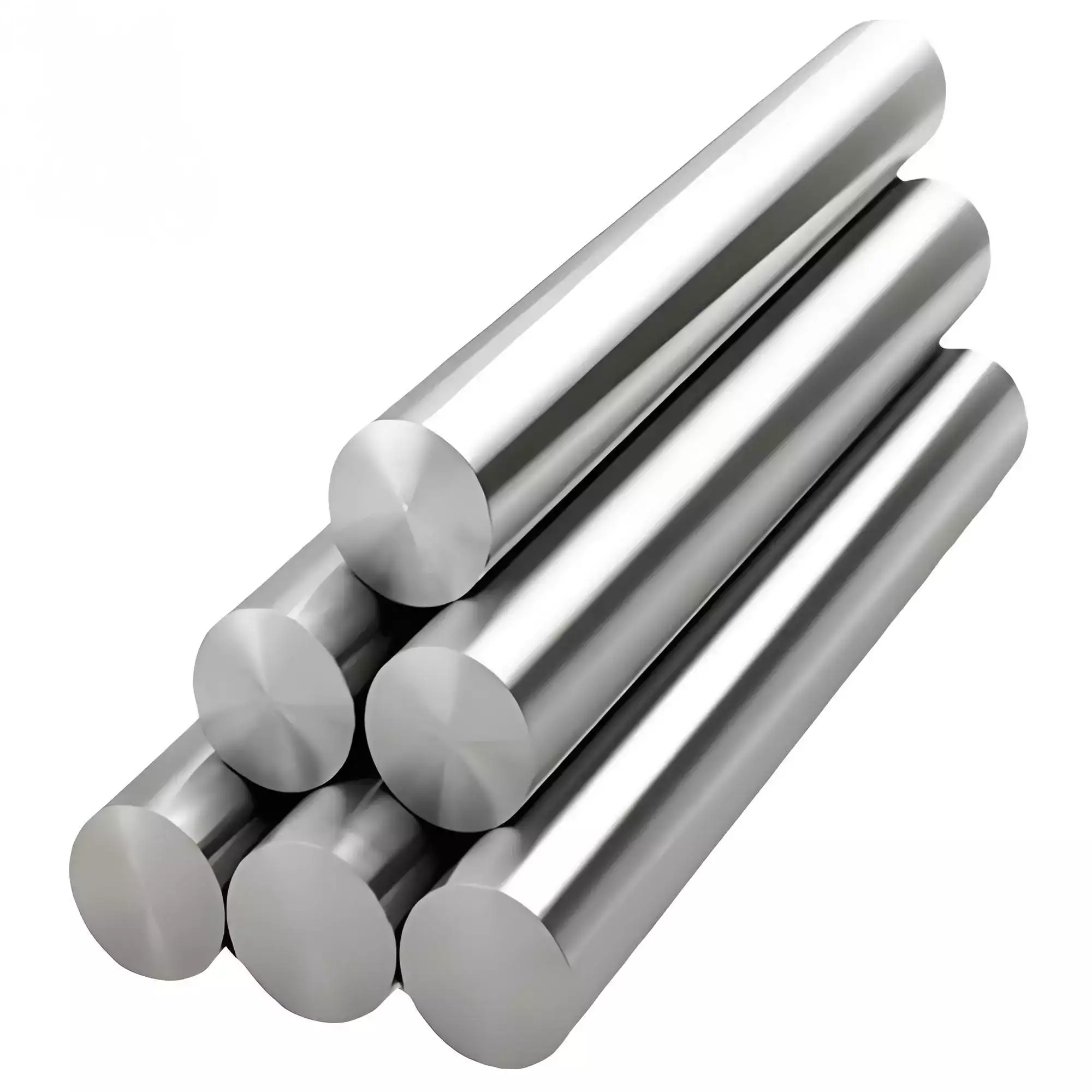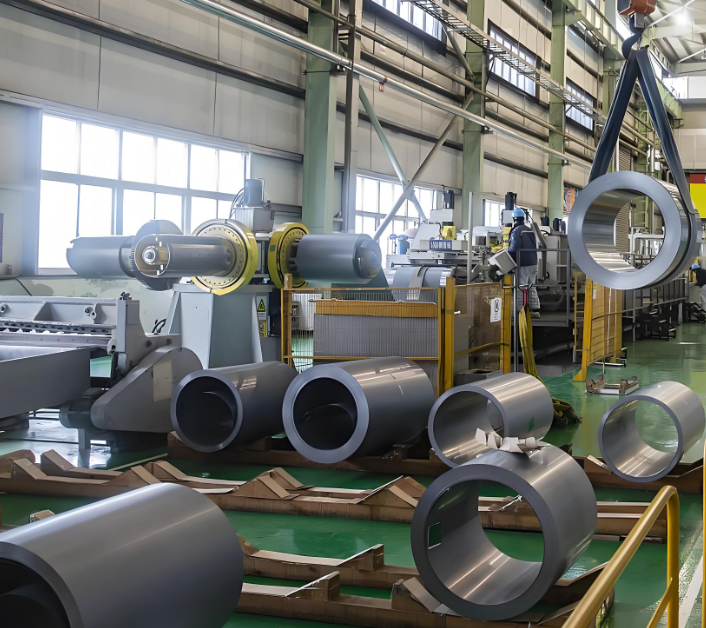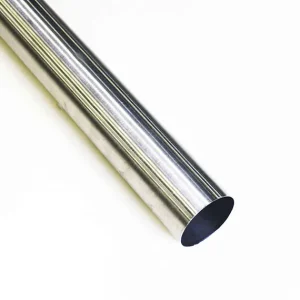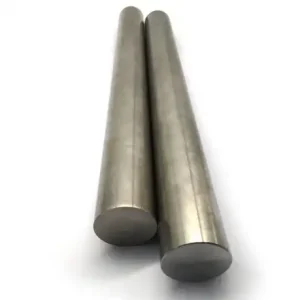Inconel 690 stands as one of the most exceptional nickel-chromium superalloys in modern industrial applications, offering unparalleled resistance to high-temperature oxidation, corrosion, and stress corrosion cracking. We recognize this advanced material as the optimal solution for nuclear power generation, chemical processing, and aerospace applications where conventional alloys fail under extreme conditions. With its unique 60% nickel and 30% chromium composition, Inconel 690 delivers superior performance in temperatures exceeding 1000°C while maintaining excellent mechanical properties and fabricability. The alloy's remarkable resistance to chloride-induced stress corrosion cracking makes it indispensable for steam generator tubing in pressurized water reactors, where safety and longevity are paramount concerns for power generation facilities worldwide.
What is Inconel Alloy 690?
Inconel 690 represents a sophisticated nickel-chromium superalloy specifically engineered for applications requiring exceptional resistance to high-temperature oxidation and aqueous corrosion. We classify this material as a solid-solution strengthened alloy that maintains its structural integrity and mechanical properties under extreme thermal and chemical stress conditions.
The alloy's development originated from the nuclear industry's need for improved steam generator tubing materials that could withstand the aggressive environment of pressurized water reactors. Traditional materials suffered from stress corrosion cracking and general corrosion, leading to costly maintenance and safety concerns. Inconel 690 emerged as the solution, offering dramatically improved performance in these critical applications.
This superalloy belongs to the family of nickel-based alloys that derive their strength from solid solution strengthening rather than precipitation hardening. The high chromium content provides exceptional oxidation resistance, while the nickel matrix ensures excellent high-temperature mechanical properties. We observe that this combination creates a material ideally suited for long-term service in challenging environments.
The metallurgical structure of Inconel 690 consists primarily of an austenitic face-centered cubic crystal structure, which contributes to its excellent ductility and toughness. This microstructure remains stable across a wide temperature range, preventing phase transformations that could compromise the material's performance characteristics.
What is The Chemical Composition Of Inconel Alloy 690?
The chemical composition of Inconel 690 is precisely controlled to optimize its performance characteristics for specific high-temperature and corrosive applications. Understanding these elemental percentages enables engineers to predict material behavior and select appropriate processing parameters.
| Element | Weight Percentage (%) | Function |
|---|---|---|
| Nickel (Ni) | 58.0 - 63.0 | Base metal providing high-temperature strength |
| Chromium (Cr) | 27.0 - 31.0 | Oxidation and corrosion resistance |
| Iron (Fe) | 7.0 - 11.0 | Cost reduction and strength enhancement |
| Carbon (C) | 0.05 max | Controlled to prevent carbide precipitation |
| Manganese (Mn) | 0.50 max | Deoxidizer and sulfur control |
| Silicon (Si) | 0.50 max | Deoxidizer and strength improvement |
| Copper (Cu) | 0.50 max | Corrosion resistance enhancement |
| Sulfur (S) | 0.015 max | Minimized for improved ductility |
| Phosphorus (P) | 0.040 max | Controlled to prevent grain boundary embrittlement |
| Aluminum (Al) | 0.40 max | Oxide film formation |
| Titanium (Ti) | 0.40 max | Grain refinement and carbide stabilization |
The precise balance of these elements creates the unique properties that distinguish Inconel 690 from other superalloys. We emphasize that the high chromium content provides superior oxidation resistance compared to other Inconel grades, while the controlled carbon content prevents the formation of chromium carbides that could compromise corrosion resistance.
The nickel-to-chromium ratio in Inconel 690 is optimized to provide maximum resistance to chloride-induced stress corrosion cracking, a critical requirement for nuclear applications. This composition also ensures excellent thermal stability and resistance to metallurgical instabilities during long-term high-temperature exposure.
What are Inconel 690 Mechanical Properties?
The mechanical properties of Inconel 690 demonstrate exceptional performance across a wide temperature range, making it suitable for demanding structural and pressure-containing applications. These properties maintain their integrity under both ambient and elevated temperature conditions.
| Property | Room Temperature | 650°C | 800°C | Test Standard |
|---|---|---|---|---|
| Tensile Strength (MPa) | 655-750 | 580-650 | 450-520 | ASTM E8 |
| Yield Strength (MPa) | 275-345 | 240-310 | 180-250 | ASTM E8 |
| Elongation (%) | 30-45 | 25-40 | 20-35 | ASTM E8 |
| Reduction of Area (%) | 55-70 | 50-65 | 45-60 | ASTM E8 |
| Hardness (HRB) | 85-95 | - | - | ASTM E18 |
| Modulus of Elasticity (GPa) | 210 | 185 | 165 | ASTM E111 |
| Poisson's Ratio | 0.31 | 0.32 | 0.33 | ASTM E132 |
| Density (g/cm³) | 8.19 | 8.10 | 8.05 | ASTM B311 |
These mechanical properties demonstrate Inconel 690's ability to maintain structural integrity under severe operating conditions. We note that the alloy retains significant strength at elevated temperatures while maintaining adequate ductility for fabrication and service requirements.
The high-temperature strength characteristics make Inconel 690 particularly suitable for pressure vessel applications where sustained loading occurs at elevated temperatures. The material's excellent creep resistance ensures dimensional stability during long-term service under stress.
What is the Specification of Inconel Alloy 690?
Inconel 690 specifications encompass various product forms, dimensional tolerances, and quality requirements established by international standards organizations. These specifications ensure consistent material properties and performance across different suppliers and applications.
| Specification Category | Details | Standard Reference |
|---|---|---|
| ASTM Designation | B166, B167, B168, B564 | Pipe, tube, plate, fittings |
| UNS Number | N06690 | Unified Numbering System |
| Product Forms | Bar, plate, sheet, tube, pipe, fittings | Various ASTM standards |
| Size Range | 0.5mm - 200mm thickness | Product form dependent |
| Length Range | Standard commercial lengths | Customer specification |
| Surface Finish | Annealed, pickled, polished | ASTM A480 |
| Dimensional Tolerance | ±0.05mm to ±3.0mm | Product and size dependent |
| Straightness | 3mm/m maximum | ASTM standards |
| Chemical Composition | Per ASTM B166 | Ladle and product analysis |
| Mechanical Properties | Room temp and elevated | ASTM E8, E21 |
| Grain Size | ASTM 5-8 typical | ASTM E112 |
The specifications ensure that Inconel 690 meets stringent quality requirements for critical applications. We maintain comprehensive quality control procedures that include chemical analysis, mechanical testing, and non-destructive examination for all product forms.
International specifications provide consistency across global markets, enabling engineers to specify Inconel 690 with confidence regardless of supplier location. The unified numbering system (UNS N06690) provides universal identification for procurement and material tracking purposes.
What Does Inconel 690 Stand For?
Inconel 690 derives its designation from the Inconel trademark combined with a numerical identifier that reflects its approximate nickel content. The "690" designation indicates the alloy's position within the Inconel family, specifically representing its high chromium content and optimized composition for nuclear applications.
The Inconel trademark, owned by Special Metals Corporation, represents a family of nickel-chromium-based superalloys developed for high-temperature and corrosive service applications. The numerical designation system helps engineers and procurement professionals identify specific alloy compositions and their intended applications.
We recognize that the "690" designation has become synonymous with premium performance in nuclear steam generator applications. The number reflects the alloy's development chronology within the Inconel family, with each number representing specific compositional modifications to address particular application requirements.
The designation system provides clear identification for material specifications, quality control, and traceability throughout the supply chain. This standardized nomenclature ensures accurate communication between suppliers, fabricators, and end users across global markets.
What is the Density of Inconel 690?
The density of Inconel 690 is 8.19 g/cm³ at room temperature, making it approximately 4% denser than stainless steel but lighter than many other superalloys. This density value is critical for structural calculations, weight estimates, and thermal analysis in engineering applications.
Temperature affects the density of Inconel 690, with thermal expansion causing slight decreases at elevated temperatures. At 650°C, the density reduces to approximately 8.10 g/cm³, while at 800°C it becomes 8.05 g/cm³. We incorporate these temperature-dependent values into high-temperature design calculations.
The density characteristics of Inconel 690 influence its suitability for weight-sensitive applications such as aerospace components and rotating machinery. The moderate density provides an acceptable balance between mechanical properties and weight considerations for most industrial applications.
Compared to aluminum alloys with densities around 2.7 g/cm³, Inconel 690 is significantly heavier but offers vastly superior high-temperature performance. This density-performance relationship makes it the preferred choice when weight is secondary to operating environment requirements.
What is the Difference Between Inconel 625, 718 and 690?
The differences between Inconel 625, 718, and 690 reflect their distinct compositional designs and intended applications. Understanding these differences helps engineers select the most appropriate alloy for specific service requirements.
Inconel 625 contains approximately 21% chromium and significant amounts of molybdenum and niobium, providing excellent resistance to pitting and crevice corrosion. Its strength derives primarily from solid solution strengthening, making it suitable for fabrication-intensive applications. We recommend Inconel 625 for chemical processing and marine applications where corrosion resistance is paramount.
Inconel 718 features a precipitation-hardening mechanism that provides exceptional strength at intermediate temperatures (up to 650°C). Its composition includes aluminum and titanium that form strengthening precipitates during heat treatment. This alloy excels in aerospace applications requiring high strength-to-weight ratios and fatigue resistance.
Inconel 690, with its 30% chromium content, offers superior high-temperature oxidation resistance and excellent resistance to chloride-induced stress corrosion cracking. The high chromium content makes it ideal for nuclear applications and high-temperature oxidizing environments where other Inconel grades would suffer degradation.
Strength characteristics vary significantly between these alloys. Inconel 718 achieves the highest room temperature strength through precipitation hardening, while Inconel 690 maintains superior strength retention at temperatures above 800°C. Inconel 625 provides intermediate strength with excellent corrosion resistance.
What is Inconel 690 Used For?
Inconel 690 finds primary application in nuclear power generation, specifically for steam generator tubing in pressurized water reactors. The alloy's exceptional resistance to stress corrosion cracking and general corrosion makes it the preferred material for this critical application where failure could have severe safety and economic consequences.
Chemical processing industries utilize Inconel 690 for reactor vessels, heat exchangers, and piping systems handling corrosive chemicals at elevated temperatures. The alloy's resistance to oxidizing acids and chloride-containing solutions makes it suitable for processes involving nitric acid, sulfuric acid, and various organic chemicals.
High-temperature furnace applications employ Inconel 690 for radiant tubes, muffles, and heat treatment fixtures. The alloy's oxidation resistance and thermal stability enable continuous operation at temperatures up to 1100°C without significant degradation or scaling.
Aerospace applications include combustor components, afterburner parts, and exhaust system elements where high-temperature strength and oxidation resistance are essential. We observe excellent performance in gas turbine applications where thermal cycling and oxidizing environments challenge conventional materials.
What is Inconel 690 Classification?
Inconel 690 is classified as a nickel-chromium superalloy according to international metallurgical standards. The Unified Numbering System designates it as UNS N06690, which provides universal identification across different national standards and specifications.
According to ASTM classification systems, Inconel 690 falls under the category of nickel-chromium-iron alloys designed for high-temperature service. The ASTM B166 specification covers various product forms including bars, plates, sheets, and forgings for general applications.
European standards classify Inconel 690 under EN 2.4642, providing equivalent specifications for European markets. This classification ensures material consistency and interchangeability between American and European suppliers while maintaining identical performance characteristics.
The classification system distinguishes Inconel 690 from other superalloys based on its specific composition ranges and intended applications. We utilize these classifications for material selection, procurement specifications, and quality control procedures throughout our operations.
Is Inconel the Strongest Metal?
While Inconel alloys rank among the strongest metallic materials at elevated temperatures, they are not universally the strongest metals across all conditions. The concept of "strongest" depends on specific properties being evaluated and operating conditions encountered.
Inconel 690 demonstrates exceptional strength retention at high temperatures where many other metals lose their structural integrity. At 800°C, Inconel 690 maintains tensile strengths of 450-520 MPa, while conventional steels would be severely weakened or completely unsuitable for structural applications.
Room temperature strength comparison shows that some tool steels and maraging steels achieve higher ultimate tensile strengths than Inconel alloys. However, these materials typically cannot maintain their strength at the elevated temperatures where Inconel excels, limiting their applicability in high-temperature environments.
We emphasize that Inconel's true strength lies in its combination of high-temperature mechanical properties, corrosion resistance, and metallurgical stability. This multifaceted performance makes Inconel alloys stronger in the sense of overall capability rather than single-property optimization.
Global Market Prices 2025 Comparison
The global market for Inconel 690 reflects the specialized nature of this superalloy and the limited number of qualified suppliers worldwide. Pricing variations depend on product form, quantity, specifications, and regional market dynamics.
| Region | Price Range (USD/kg) | Market Factors | Supply Status |
|---|---|---|---|
| North America | $45-65 | Strong aerospace demand | Good availability |
| Europe | $48-68 | Nuclear industry requirements | Stable supply |
| Asia-Pacific | $42-58 | Manufacturing cost advantages | Excellent |
| Middle East | $50-70 | Import dependencies, energy projects | Moderate |
| South America | $52-72 | Logistics costs, limited suppliers | Variable |
| Africa | $55-75 | Import challenges, project demand | Limited |
Price fluctuations occur due to raw material costs, particularly nickel and chromium, which represent significant portions of the alloy's composition. We recommend establishing long-term supply agreements for major projects to minimize price volatility impact and ensure material availability.
The specialized processing requirements and limited supplier base contribute to higher prices compared to conventional alloys. However, the superior performance and extended service life typically justify the premium cost in critical applications.
Can Inconel 690 be Welded?
Inconel 690 exhibits excellent weldability using conventional fusion welding processes, making it suitable for complex fabrications and field repairs. The alloy's composition and metallurgical characteristics facilitate welding without extensive preheating or post-weld heat treatment requirements.
Gas tungsten arc welding (GTAW) represents the preferred method for Inconel 690, providing precise control over heat input and producing high-quality welds with minimal contamination. We recommend using matching composition filler metals (ERNiCr-3) to maintain corrosion resistance and mechanical properties in the weld zone.
Preheating requirements for Inconel 690 are minimal, typically limited to removing moisture and contaminants from the base material. Unlike some superalloys, Inconel 690 does not require elevated preheat temperatures that could complicate field welding operations or large structure fabrication.
Post-weld heat treatment is generally not required for Inconel 690 weldments, though stress relief treatments may be beneficial for pressure vessel applications or highly restrained joints. The alloy's solid solution strengthening mechanism prevents age-hardening effects that could complicate heat treatment procedures.
Welding technique considerations include maintaining low heat input to minimize grain growth, using proper shielding gas compositions (typically argon or argon-hydrogen mixtures), and controlling interpass temperatures to prevent excessive thermal exposure.
Advantages of Inconel 690
The advantages of Inconel 690 stem from its unique composition and metallurgical structure, which provide exceptional performance in environments where conventional materials fail. These benefits make it indispensable for critical applications requiring long-term reliability.
Outstanding high-temperature oxidation resistance represents the primary advantage, with service capability extending to 1100°C in oxidizing atmospheres. The high chromium content forms a protective oxide scale that prevents further oxidation and maintains material integrity during extended exposure.
Exceptional resistance to stress corrosion cracking, particularly in chloride-containing environments, makes Inconel 690 superior to other stainless steels and superalloys. This characteristic proves critical in nuclear applications where chloride contamination could lead to catastrophic failures.
Superior thermal stability prevents metallurgical degradation during long-term high-temperature service. Unlike precipitation-hardened alloys that may over-age or lose strength, Inconel 690 maintains consistent properties throughout its service life.
Excellent fabricability despite its high-performance characteristics enables complex component manufacturing using conventional metalworking techniques. The material can be formed, machined, and welded without extraordinary precautions or specialized equipment.
Manufacturing Process of Inconel 690
The manufacturing process of Inconel 690 begins with vacuum induction melting (VIM) followed by vacuum arc remelting (VAR) or electroslag remelting (ESR) to achieve the required chemical composition and metallurgical quality. This double-melting process eliminates inclusions and ensures compositional homogeneity throughout the ingot.
Primary processing involves hot working operations such as forging, rolling, or extrusion to break down the cast structure and develop the desired mechanical properties. We carefully control deformation temperatures and reduction ratios to optimize grain structure and eliminate processing defects.
Solution annealing heat treatment follows hot working, typically performed at temperatures between 1000-1100°C depending on the specific product form and application requirements. This treatment dissolves any precipitates that may have formed during processing and establishes the desired microstructure.
Cold working operations, when required, are performed after solution annealing to achieve specific dimensional tolerances or mechanical properties. The degree of cold work is carefully controlled to prevent excessive work hardening that could compromise subsequent processing operations.
Final heat treatment involves solution annealing followed by rapid cooling to retain the single-phase austenitic structure. Surface treatments such as pickling or mechanical finishing may be applied to achieve specified surface conditions and remove any oxidation products.
Quality control throughout the manufacturing process includes chemical analysis, mechanical testing, ultrasonic inspection, and dimensional verification. Each processing step is monitored to ensure compliance with specifications and maintain traceability for critical applications.
Bahrain Petrochemical Complex Case Study
A major petrochemical facility in Bahrain implemented Inconel 690 components in their high-temperature catalytic reforming units to address severe corrosion and oxidation issues. The project demonstrates the material's effectiveness in challenging Middle Eastern industrial environments.
The facility experienced premature failure of conventional stainless steel components in their reforming reactors due to the combination of high temperatures (850°C), hydrogen-rich atmospheres, and trace sulfur compounds. Equipment failures resulted in unplanned shutdowns and significant production losses.
We supplied 25 tons of Inconel 690 in various forms including reactor internals, heat exchanger tubing, and high-temperature piping systems. The installation was coordinated with the facility's turnaround schedule, with specialized welding procedures developed for the specific operating conditions.
Performance monitoring over 36 months revealed exceptional results, with Inconel 690 components showing minimal degradation compared to previous materials. Corrosion rates decreased by over 90%, and high-temperature oxidation was virtually eliminated in the reforming environment.
The success led to expanded use of Inconel 690 throughout the complex, including applications in hydrocracking units and high-temperature separation systems. The facility now specifies Inconel 690 for all critical high-temperature applications where reliability is essential.
Economic benefits exceeded $4.2 million annually when considering reduced maintenance costs, improved equipment availability, and enhanced product quality. The project serves as a reference for other petrochemical facilities in the Gulf region considering material upgrades for high-temperature processes.
Frequently Asked Questions
Q1: What is the maximum operating temperature for Inconel 690?
Inconel 690 can operate continuously at temperatures up to 1000°C in oxidizing environments, with intermittent service capability extending to 1100°C. The actual temperature limit depends on specific application requirements, stress levels, and environmental conditions. We recommend detailed analysis for applications exceeding 950°C to ensure adequate safety margins.
Q2: How does Inconel 690 compare to Hastelloy alloys for corrosion resistance?
Inconel 690 excels in high-temperature oxidizing environments and chloride-containing solutions, while Hastelloy alloys typically perform better in reducing acid environments. The choice depends on specific chemical exposures and operating temperatures. We provide comparative performance data to help engineers select the optimal material for their applications.
Q3: Can Inconel 690 be cold formed and machined?
Inconel 690 can be cold formed using conventional equipment, though higher forces are required compared to stainless steels. Machining requires sharp tools, adequate coolant, and controlled cutting parameters due to the alloy's work-hardening characteristics. We provide detailed fabrication guidelines to ensure successful processing.
Q4: What non-destructive testing methods are suitable for Inconel 690?
All conventional NDT methods including liquid penetrant, magnetic particle (where applicable), ultrasonic, and radiographic testing can be used with Inconel 690. Eddy current testing is particularly effective for tube inspections. Material properties may require adjusted inspection parameters for optimal sensitivity.
Q5: Is Inconel 690 suitable for cryogenic applications?
Inconel 690 maintains good toughness at cryogenic temperatures and does not exhibit ductile-to-brittle transition behavior like ferritic steels. However, other alloys may be more cost-effective for purely cryogenic applications. We evaluate each application individually to recommend the most suitable material.






